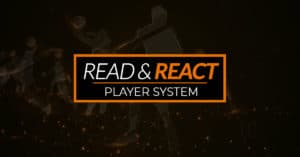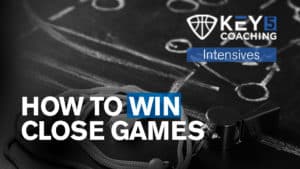The following article is written by ICEBOX Performance Coach Spencer Wood.
Here is a sobering thought, in the entire history of high school and collegiate sports, the most important individual and team championship skill is often the skill that is practiced the least; namely the ability to perform extremely well under pressure. Of all the sweat, effort, energy and time that is invested in strength training and conditioning, individual and team offense / defense, and pre-game preparation; a relatively small amount of time and emphasis (if any) is placed on this all important athletic trait. Few would argue that the ability to perform under pressure is a critical skill that is often responsible for bringing all of these components together, and a skill that will be the deciding factor in so many games next season. This sobering thought is even more of a reality in the pressure filled crucible of the playoffs & post-season. Through the privilege of working with multiple teams in the NCAA tournament and numerous NCAA Final Fours for both men and women, I have learned that those teams who invest the most time and effort on performing well under pressure, are often among the best equipped to handle the intense heat and pressure of the post-season.
Unfortunately, many athletes and coaches approach the development of great pressure performance with the mantra ‘we’ll just continue to practice the play or skill ‘till its automatic under pressure.’ And while there is a small element of truth to this strategy, continuously practicing a skill in a ‘practice’ environment, i.e., outside of the intense heat of a championship tournament, only ensures greater proficiency of that skill in that ‘practice’ environment and only some limited improvements in ‘pressure’ situations. A more direct approach takes us directly to the source – training the 3 ½ pounds of electrical energy between our ears….our mind. However, I have come to learn that we usually only coach and teach those things that we are comfortable, confident and proficient in teaching, and talking about the mind, mental skill and mental toughness is not always the easiest of skills to discuss and teach. With that in mind, the following 3 steps outline a strong, fundamental yet simple approach to teaching pressure performance. Coaches and athletes wishing to learn more and further develop each of the components are welcome to further explore my website and materials.
Step 1 – Know your optimal arousal or ‘Hype’ number
I believe this first skill (poise and how to attain it) is among the most misunderstood of skills in all of sports. Some athletes perform extremely well when they are on an emotional high, while others are at their best with relatively low emotions. On an emotional arousal or ‘hype’ scale of 1-10 (with a 1 equal to an almost comatose pre-game state and a 10 equal to the athlete that regularly high fives teammates so hard their hands sting for 10 minutes) and a performance scale of 1-10 (with a 1 equal to a lifetime worst performance and a 10 equal to a lifetime best performance), I have played with athletes who needed to have an emotional arousal level around 2-4 (very low) in order to consistently perform at an 8-10 (very high). I have also played with athletes who needed to have an emotional arousal level around an 8-10 in order to consistently perform at an 8-10 level. One of the biggest mistakes that inexperienced coaches and players make is believing the entire team should be at the same emotional arousal level. Note that emotional arousal level has NOTHING to do with intensity. Athletes do not always have to be ‘jacked up,’ ‘hyped’ or highly emotionally aroused to perform at 100% intensity. Yet many coaches and athletes push themselves and many of their players out of their optimal arousal level/hype #, and onto a knife edge of heightened emotions, poor shooting percentages, defensive errors, and mistakes under pressure. Athletes and coaches should know their own optimal arousal level and stay at the level that brings out their very best performance.
The take home message here is that a controlled level of heightened emotion is a great thing – it sharpens our reactions, increases our intensity and sustains our energy levels. However, there is a law of diminishing returns, and too much emotion impairs judgment, on-court decision making and poise. Great emotion and great intensity should not always be linked. The great Joe Dumars was not one of the greatest defensive guards in the history of the NBA because of the heightened emotions he brought to the court. But Michael Jordan called him one of the toughest players he ever had to play against because of his overall defensive intensity. Dumars was renowned for his intensity while also being renowned for his level of poise. In Dumars we have one of the greatest examples of controlled, channeled aggression.
Stay Tuned for Step 2 later this week!






